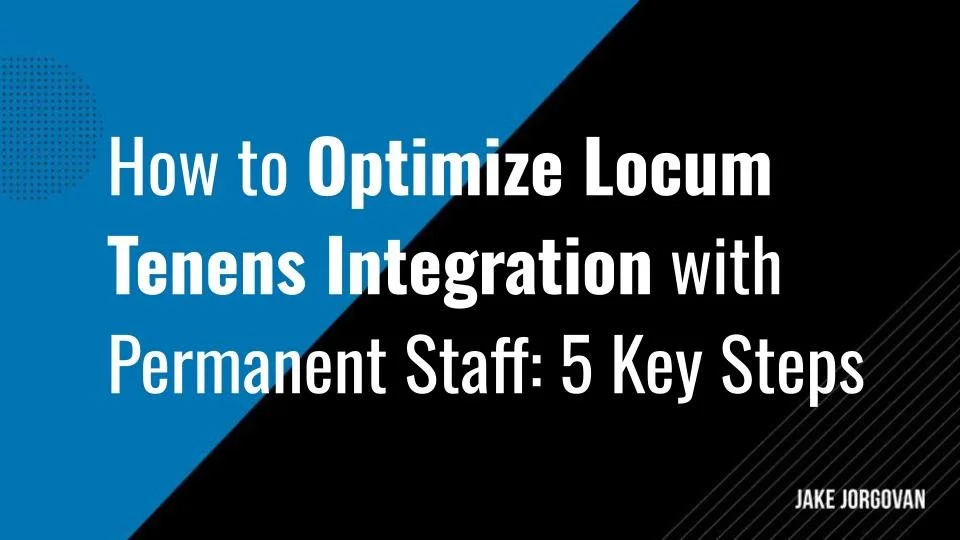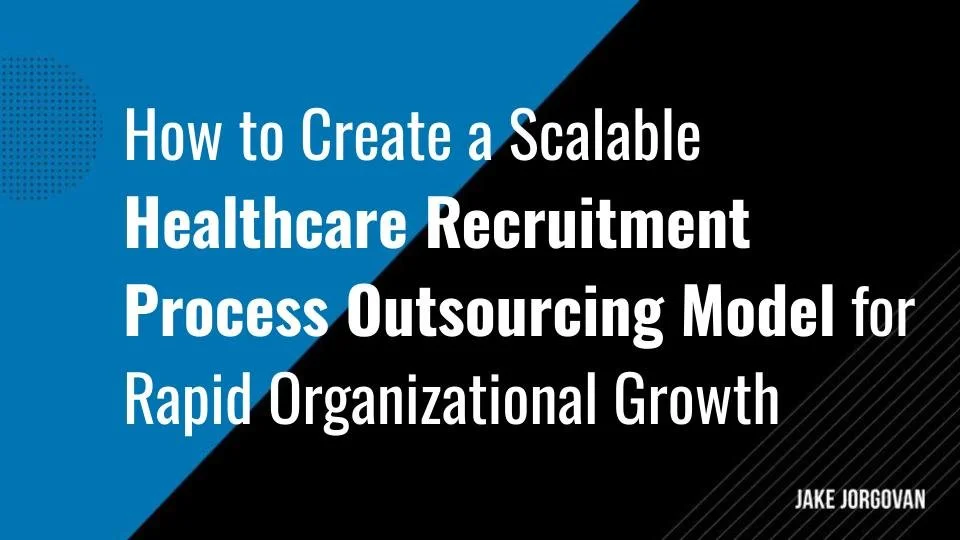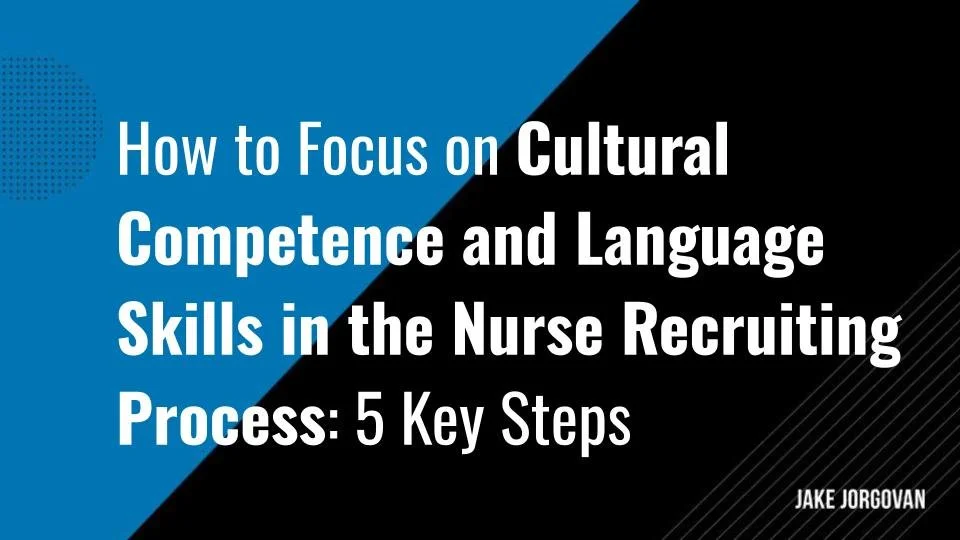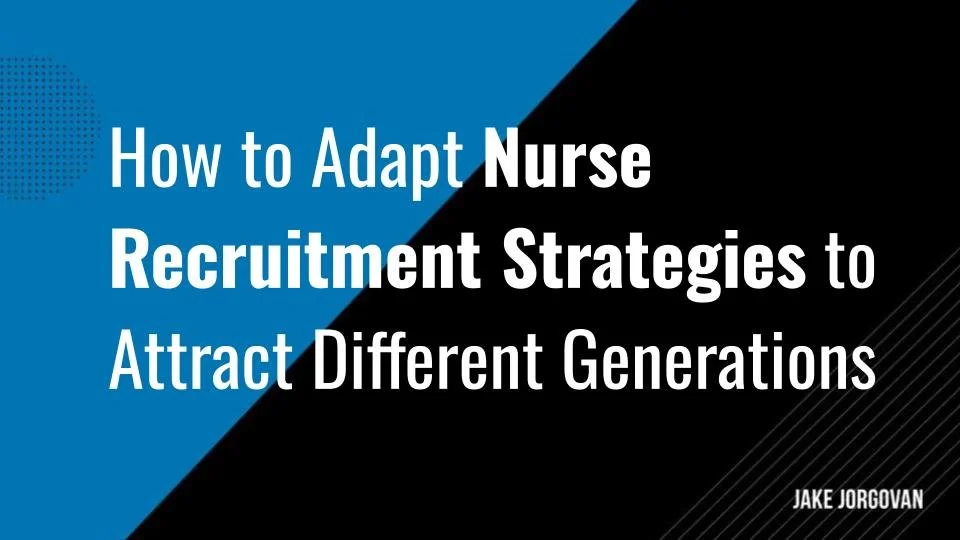7 Strategies for Recruiting Allied Health Professionals in 2025
Allied health professionals (AHPs) are the backbone of patient care, covering diverse roles from diagnostics to rehabilitation.
They are the hands-on experts who translate medical decisions into patient outcomes.
However, the healthcare system faces a significant challenge: a growing shortage of AHPs.
This gap directly impacts patient care quality and service delivery.
The need for solutions is urgent. Without immediate action, the strain on healthcare systems will deepen.
The question isn’t if the shortage will affect us but how severely.
Let's explore the implications and possible solutions.
Understanding the Current Recruitment Trends
High Turnover and Burnout
Healthcare turnover rates are alarmingly high, particularly in allied health roles, where up to 62.2% of employees leave within two years. Burnout is a major factor, with healthcare professionals experiencing a 2.9 times higher risk of burnout due to work overload.
This burnout is fueled by poor work-life balance, low compensation, and the emotionally taxing nature of the work, leading to a significant impact on workforce stability and patient care quality
High turnover and burnout in allied health roles create significant challenges for recruitment and retention:
Recruitment Disruption: High turnover forces continuous recruitment, leading to a reactive rather than proactive approach. This disrupts the ability to build long-term strategies.
Reduced Candidate Pool: Burnout deters potential candidates from entering or remaining in the profession. The perception of high stress and poor work-life balance shrinks the pool of interested professionals.
Increased Costs: Frequent turnover increases recruitment and training costs. Constant onboarding reduces the focus on improving patient care and service quality.
Retention Struggles: Burnout contributes to early exits, making it difficult to maintain experienced staff. This affects the overall competency and stability of healthcare teams.
Emerging Specializations and Skills
The rise of teletherapy and digital health demands new skill sets. Professionals must now be adept in virtual care platforms and digital diagnostics.
Recruiting individuals with these capabilities is necessary to keep pace with evolving healthcare delivery, ensuring services remain effective and accessible in a tech-driven environment.
Recruitment now prioritizes adaptability to technological advancements:
Technological Competence: Professionals must master emerging tools and platforms. This ensures efficiency and accuracy in patient care.
Continuous Learning: Recruits should show a commitment to ongoing education in technology applications to stay relevant and effective.
Innovation Encouragement: Staff comfortable with technology drive innovation. They are more likely to embrace and implement new solutions that enhance care delivery.
Adapting recruitment strategies to prioritize these qualities is imperative for maintaining a competitive and capable healthcare team.
Key Strategies for Recruiting Allied Health Professionals
Flexibility and Work-Life Balance
Top healthcare headhunters say that offering short-term contracts and flexible shifts is now a competitive strategy in recruiting allied health professionals.
These options attract candidates seeking better control over their schedules, directly addressing work-life balance concerns and distinguishing employers in a competitive recruitment market.
Incorporate flexible work schedules and roles to better attract professionals:
Customize Your Offerings: Tailor schedules to individual needs. Allow professionals to choose from various shift patterns or part-time roles, increasing your appeal to a broader demographic.
Promote Work-Life Harmony: Emphasize how your organization supports a balance between personal life and career demands. This not only attracts new talent but also retains current staff who value flexibility.
Respond to Market Demands: Observe and react to trends in workforce preferences. Professionals today seek positions that accommodate their lifestyle and family commitments without sacrificing career progression.
Highlight Flexibility in Job Listings: Clearly communicate the availability of flexible working options in your job postings. This transparency sets clear expectations and attracts candidates who prioritize flexibility.
Pro Tip:
Survey your current team to identify popular flexible practices and implement them strategically. Highlight these practices in recruitment materials. Show real examples of how flexibility has improved employee satisfaction and retention. This positions you as a forward-thinking employer, directly appealing to top-tier talent.
Early and Efficient Recruitment Processes
Initiating recruitment early ensures candidates complete licensure and certification on time. This proactive approach reduces onboarding delays and secures talent ready to work from day one, especially when it comes to healthcare executive search.
It also allows you to guide candidates through the licensure process, aligning their qualifications with your organization’s needs efficiently.
To enhance your recruitment effectiveness:
Streamline Application Steps: Simplify the application process to a few clear steps. Reduce paperwork and shorten the path from application to interview, speeding up the overall process.
Enhance Transparency: Clearly communicate each stage of the recruitment process. Offer regular updates and feedback to candidates. This openness builds trust and keeps high-caliber applicants engaged and informed.
Utilize Digital Tools: Adopt technology for scheduling and communication. Tools like applicant tracking systems (ATS) can automate portions of the recruitment, ensuring you don’t lose track of promising candidates.
Set Clear Timelines: Provide exact timelines for feedback and next steps. This prevents top talent from dropping out of the pipeline due to uncertainty or delays in the hiring process.
Pro Tip:
Consider integrating real-time chat platforms into your recruitment strategy. This allows you to answer candidate inquiries instantly, keeping engagement high. It also positions your organization as responsive and accessible, traits that attract top professionals who value clear, direct communication lines.
Leveraging Technology and AI
Technology enhances recruitment by automating candidate screening and matching, saving time and improving accuracy. AI-driven tools predict candidate fit, ensuring quicker, more precise hires.
Workforce management benefits from real-time data analytics, allowing you to optimize staffing, anticipate needs, and reduce turnover through proactive interventions.
Incorporate AI-driven tools to refine your recruitment:
Automate Screening: Use AI to filter applications based on predefined criteria. This ensures you review only the most relevant candidates, reducing time spent on unsuitable profiles.
Enhance Matching: Deploy algorithms that match candidate skills and experience with job requirements more accurately. This precision leads to better-fit hires and fewer mismatches.
Predict Success: Employ predictive analytics to assess candidate potential and likely job performance. This forward-looking approach identifies who might excel long-term, not just who meets current needs.
Optimize Interviews: Leverage AI to analyze responses from preliminary video interviews. This technology can highlight candidates whose verbal and nonverbal cues suggest a good fit with your team dynamics and culture.
Utilizing these technologies makes your recruitment process more efficient, helping you secure top talent quickly and effectively.
Pro Tip:
To maximize AI effectiveness, regularly update your criteria and algorithms based on evolving job roles and market trends. This ensures your technology remains aligned with your strategic hiring goals and adapts to changes in healthcare demands, keeping your recruitment process at the forefront of industry standards.
Offering Competitive Benefits and Career Progression
Offering competitive benefits and clear career progression attracts top-tier professionals and reduces turnover. Candidates seek positions where they feel valued and see a future. By providing strong benefits and advancement opportunities, you differentiate your organization, ensuring long-term commitment from skilled professionals who contribute to sustained excellence in care delivery.
To attract and retain top talent in allied health:
Enhance Benefits Packages: Include comprehensive mental health support and wellness programs. This boosts overall employee satisfaction and addresses industry-specific stressors.
Implement Wellness Initiatives: Regular wellness activities not only support physical and mental health but also improve job satisfaction and team cohesion.
Develop Career Ladders: Establish transparent career progression paths. Clearly outline the steps and qualifications needed for advancement within your organization.
Support Professional Development: Offer continuous learning opportunities, including training and certifications. This demonstrates investment in your team’s growth and ensures they remain at the cutting edge of their specialties.
Personalize Growth Plans: Tailor development plans to individual career goals and skills. This personalized approach shows commitment to each professional’s success, making your organization more attractive.
Pro Tip:
Regularly review and update your benefits and progression policies to reflect current healthcare trends and workforce needs. Engage directly with your team to gather feedback and tailor offerings. This responsiveness not only boosts morale but also ensures you remain a preferred employer in a competitive field.
Retention Strategies to Support Recruitment Efforts
Focus on Employee Well-Being
A supportive work environment directly impacts retention. Professionals stay where they feel valued and understood. Regular check-ins, mental health resources, and a culture of respect foster loyalty. When staff feel supported, they’re less likely to leave, ensuring continuity and stability in your healthcare teams.
To combat burnout and support your team’s well-being:
Introduce Mental Health Resources: Offer access to counseling and stress management workshops. These services show your commitment to the psychological health of your employees.
Adopt Flexible Work Conditions: Allow options for remote work or varied shift patterns. Flexibility can significantly reduce job-related stress and improve overall job satisfaction.
Provide Rest Areas: Ensure there are designated spaces for staff to unwind during breaks. A physical space to relax can help mitigate daily stressors.
Encourage Regular Breaks: Promote a culture where taking breaks is normal and expected. This practice helps prevent burnout by allowing staff to recharge.
Facilitate a Supportive Atmosphere: Cultivate an environment where employees feel safe discussing their concerns. Encourage team support and peer-to-peer mentorship to build a community that nurtures well-being.
Pro Tip:
Regularly assess the impact of your well-being initiatives through anonymous surveys and direct feedback sessions. Use this data to fine-tune your strategies and ensure they effectively address the real concerns of your team. Stay responsive to feedback, demonstrating that you value and act on employee input.
Diversity and Inclusion
Implementing bias-free recruitment and supportive policies fosters an equitable workplace, attracting diverse talent. A diverse team enhances problem-solving and innovation, crucial in healthcare. It also reflects the varied patient demographics, improving care delivery. Equity in the workplace builds trust, leading to higher retention and a stronger, more cohesive team.
To build a culturally competent and innovative workforce:
Broaden Recruitment Channels: Actively seek candidates from diverse backgrounds by using targeted outreach and diverse job boards. This approach widens your talent pool and brings varied perspectives.
Standardize Hiring Processes: Implement structured interviews and blind resume reviews to minimize unconscious bias. This ensures that all candidates are evaluated purely on merit.
Foster Inclusive Culture: Promote a workplace culture where diversity is celebrated. Provide diversity training and encourage open dialogue to create an environment where all employees feel valued.
Support Diverse Talent: Offer mentorship and professional development tailored to underrepresented groups. This not only supports career growth but also strengthens your workforce by retaining diverse talent.
Highlight Diversity in Leadership: Ensure diverse representation in leadership roles. Visible diversity at the top levels signals commitment and attracts candidates who value inclusivity.
These practices enhance cultural competence and drive innovation, making your workforce more adaptable and effective.
Pro Tip:
Evaluate your diversity initiatives annually and adjust based on the outcomes and employee feedback. Consider partnerships with educational institutions that serve diverse communities to foster a pipeline of future candidates. This proactive approach ensures your strategies remain relevant and effective in promoting an inclusive workplace.
Collaboration and Interdisciplinary Care Models
Promoting Team-Based Care
The shift towards collaborative care models integrates diverse expertise, improving patient outcomes. Teams that blend skills from various allied health professions address patient needs more comprehensively and efficiently. This approach reduces errors, enhances care quality, and increases patient satisfaction.
To build effective teams through cross-training and interdisciplinary collaboration:
Implement Cross-Training Programs: Develop structured programs that allow professionals to learn skills from adjacent disciplines. This broadens their capabilities and fosters mutual understanding among team members.
Create Collaborative Spaces: Design work environments that facilitate interaction across disciplines. Physical and virtual spaces that encourage collaboration can lead to more integrated team dynamics and innovative problem-solving.
Incorporate Team Projects: Initiate projects that require joint efforts from various specialties. This hands-on approach helps cement the theoretical aspects of cross-training into practical, beneficial outcomes for patient care.
Promote Role Rotation: Encourage staff to take on roles in different areas temporarily. This not only increases empathy among team members but also enhances adaptability.
Highlight Benefits: Regularly communicate the direct benefits of a collaborative approach, such as improved patient outcomes and personal professional growth, to motivate continued participation and buy-in.
These strategies not only improve team effectiveness but also enrich the professional experience, making your organization more attractive to current and potential employees.
Pro Tip:
Monitor the impact of your cross-training and collaborative initiatives through specific performance metrics. Adjust training frequency and team compositions based on these insights to optimize outcomes. Tailor your strategy to continuously evolve with team dynamics and healthcare advancements, ensuring sustained effectiveness and team cohesion.
Case Studies and Examples
These models demonstrate how interdisciplinary collaboration enhances healthcare delivery by improving patient outcomes, reducing inefficiencies, and increasing job satisfaction among healthcare professionals:
Massachusetts General Hospital: Implemented a multidisciplinary rapid-response team for pulmonary embolism patients, leading to improved emergency care and higher survival rates
Cleveland Clinic: Uses a multidisciplinary "tumor board" to discuss complex cancer cases, optimizing individualized treatment plans and enhancing patient satisfaction and outcomes
Johns Hopkins Pancreatic Cancer Clinic: Integrates specialists across multiple disciplines, improving the success rate of complex surgeries like the Whipple procedure.
Mayo Clinic Transplant Teams: Involves over 150 professionals across disciplines to streamline transplant procedures, reducing recovery times and boosting treatment success.
Embrace Future Trends in Allied Health Recruitment
Proactive recruitment is critical to meeting healthcare’s evolving demands.
Embracing innovation and forming strategic partnerships enhance service delivery and operational efficiency.
The future of allied health recruitment will demand adaptability, with trends like AI integration and flexible work models shaping the approach.
Staying ahead requires continuous evolution in recruitment strategies to attract and retain top talent.



































